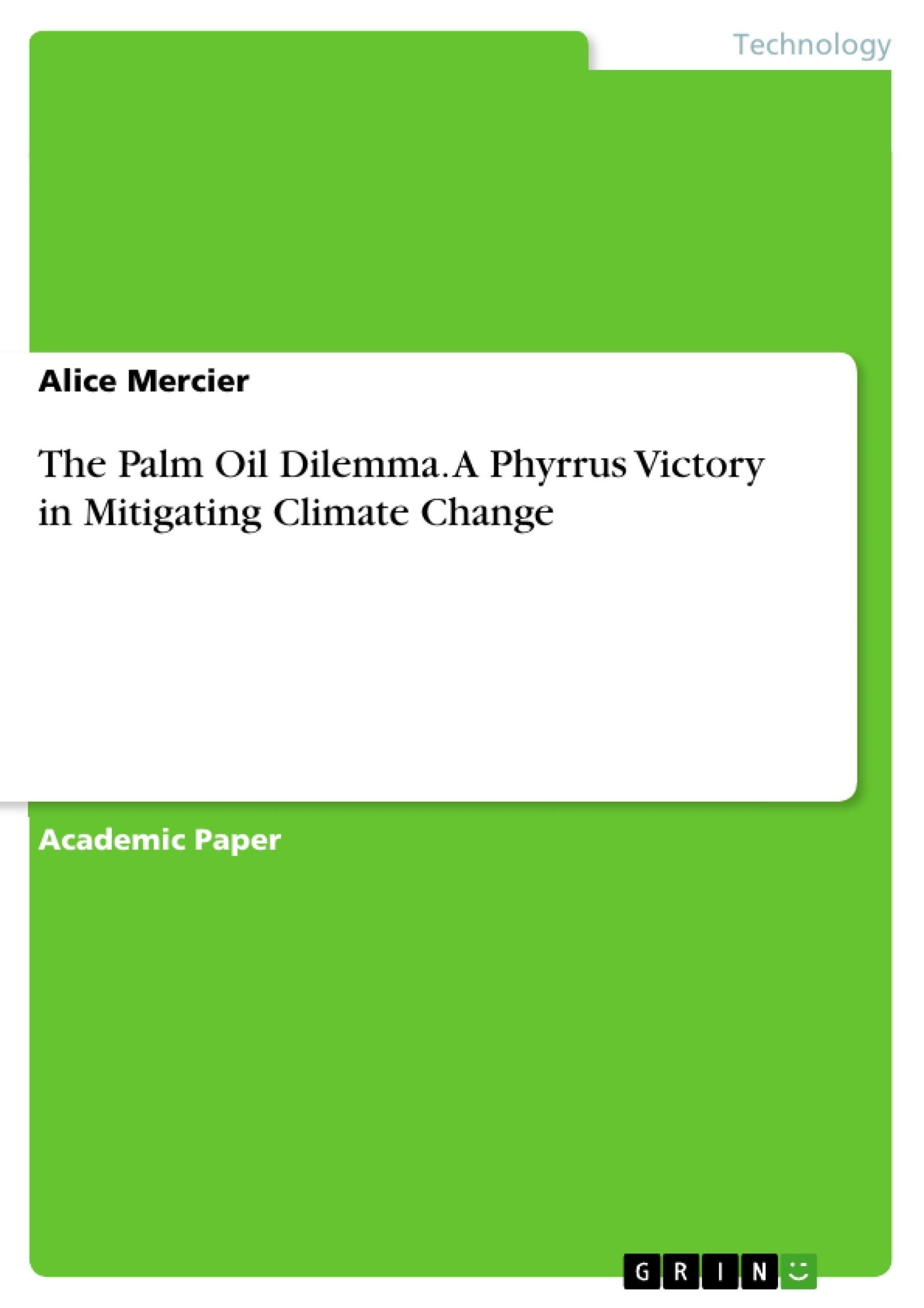In recent years, palm oil, due to its versatile usages in the food and mechanic industry, experi-enced a rapidly growing demand on the world market. Market researchers predict an even in-creasing importance of the already leading oil seed crop, because of its role as a feedstock for biofuel. Despite its unexcelled yield per unit of cultivated area, oil palm "Elaeis guineensis" is among the most controversially discussed agricultural products.
There is a confusingly high number of stakeholders involved, and strong lobbying from both, proponents and opponents of palm oil, make any impartial balancing of the potential uses and/or destructiveness a difficult task. Beyond dispute is the fact, that with the growing demand, ecologically justifiable acreage becomes increasingly scarce which enhances the pressure for land conversion. Unfortunately, the climatic tolerance limits of "E. guineensis" restrict its successful cultivation to tropical realms, eco-sensitive areas with the highest biodiversity levels.
Scientists watch with despair how mono-cultures are spreading at an ever-increasing pace, often replacing food crops and subsistence farming plots nourishing local people, and even more often at the expense of the world's few virgin forests remnants. Various policies and strategies on an international (REDD, CDM, RSPO) and national (national laws) level have been pronounced and partially implemented, to ensure a more sustainable palm oil production.
Currently, however, political incapacity, corruption, loopholes and beguilements, paralyze the intentions to capitalize the factual benefits of palm oil as a productive feedstock for renewable energy, and as an economy and welfare booster for less developed areas. Under present conditions an increased productivity of palm oil is overpaid for dearly, by the local people and the international community with widespread deforestation, resulting GHG (Green House Gas) emissions, an incredible loss of biodiversity and ecological integrity. In short, palm oil has great potential to help meet the growing energy demand in a more sustainable way, but it is a long way to go and currently the impacts crucially outweigh the benefits.
Inhaltsverzeichnis (Table of Contents)
- Abstract
- Introduction
- Status quo- agricultural, economic and trade relations.
- Biodiversity Issues
- The Oil Palm on the march...
- At the heart of the problem: Deforestation ......
- A Case study; The Sumatran Orangutan (Pongo abelii)
- Impacts on Climate Change..
- Palm Oil as Biofuel Feedstock..
- The Carbon Balance...........
- The worst case scenario: Peatland converted to plantations
- REDD - Reducing Emissions from Deforestation and Degradation........
- First Mitigation Attempts…………………………….
- Mitigation measures and the immense potential
- RSPO- the Roundtable on Sustainable Palm Oil ………..\n
- Scientific research as a ground to act upon.........
- Best Management Practices ..
- Corruption, disinformation & Public awareness
- Socioeconomic Implications
- Conclusion
- References.
Zielsetzung und Themenschwerpunkte (Objectives and Key Themes)
This work examines the complex and multifaceted issues surrounding the production and use of palm oil, analyzing its impact on biodiversity, climate change, and socioeconomic landscapes.
- The rapidly increasing demand for palm oil and its implications for sustainable land use.
- The environmental consequences of palm oil production, including deforestation, biodiversity loss, and greenhouse gas emissions.
- The role of palm oil as a biofuel feedstock and the associated environmental and economic considerations.
- Mitigation efforts to promote sustainable palm oil production, such as the Roundtable on Sustainable Palm Oil (RSPO) and REDD+ initiatives.
- The challenges and complexities of balancing the economic benefits of palm oil with its environmental and social impacts.
Zusammenfassung der Kapitel (Chapter Summaries)
The first chapter of this work provides an introduction to the topic, outlining the growing demand for palm oil and its economic significance. The chapter also discusses the historical development of palm oil cultivation and its geographic distribution.
Chapter two delves into the biodiversity issues associated with palm oil production. It explores the ecological impacts of deforestation and habitat loss, focusing on the case of the Sumatran orangutan.
Chapter three analyzes the effects of palm oil production on climate change. The chapter examines the carbon balance associated with palm oil cultivation, exploring the potential for both carbon emissions and sequestration. The use of palm oil as a biofuel feedstock and the environmental consequences of converting peatlands to plantations are also discussed.
Chapter four explores various mitigation attempts aimed at promoting sustainable palm oil production. It introduces the Roundtable on Sustainable Palm Oil (RSPO) and examines the role of scientific research and best management practices.
Chapter five discusses the challenges of corruption, disinformation, and public awareness in relation to palm oil production. It examines how these factors can hinder efforts to promote sustainable practices.
Chapter six explores the socioeconomic implications of palm oil production, examining its impact on local communities, economic development, and livelihoods.
Schlüsselwörter (Keywords)
This text focuses on the critical issues of sustainable land use, biodiversity conservation, climate change mitigation, and sustainable palm oil production. Key themes include deforestation, habitat loss, greenhouse gas emissions, biofuel feedstock, REDD+, RSPO, and the socioeconomic implications of palm oil production.
- Quote paper
- Alice Mercier (Author), 2010, The Palm Oil Dilemma. A Phyrrus Victory in Mitigating Climate Change, Munich, GRIN Verlag, https://www.hausarbeiten.de/document/914045


